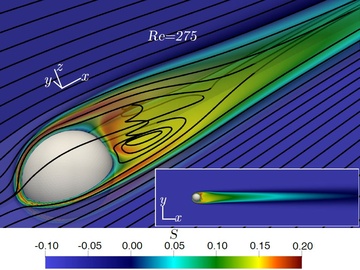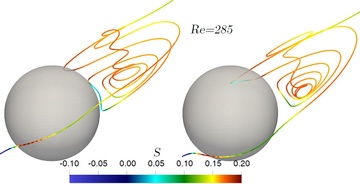The articles of the current edition are available on the new site.

In Geophysical Research Letters, the scientists from the Max Planck Institute for Dynamics and Self-Organization (MPIDS), Germany, and the Politecnico di Torino reported their new findings on how precipitating large raindrops, ice particles can favor growth of aerosols to produce new cloud condensation nuclei or ice nucleating particles.
Atmospheric clouds play a crucial role in defining the local weather and global climate. The activation of cloud aerosols, such as mineral dust, soot particles, pollutants, acid molecules and ions, impacts the life cycle of a cloud. Therefore, a detailed understanding is necessary for reliable climate prediction and weather forecasting. Out of many mysteries of clouds, we still do not understand how and why the number of ice particles inside clouds exceed the number of ice nucleating particles that could be activated. What are the major sources behind this excess (secondary) production of particles?

(Figure 1): Excess water vapor (S>0) behind a precipitating frozen hydrometeor at 0°C temperature falling through an ambient at -15°C and 90% relative humidity condition. An aerosol in black line can be seen to enter the water vapor rich environment.
In this letter, the scientists of MPIDS and POLITO have numerically investigated one such secondary particle production processes inside clouds resulting to new water droplets or ice particles. Out of several proposed physical processes for new droplet generation, recent experimental studies have shown that a large droplet can nucleate aerosols in the wake behind it when falling under gravity. Extending the experiments, this letter presents a detailed analysis of various physical factors that lead to an excess of water vapor behind the hydrometeors (e.g., droplets, sleet, or hail) and investigates the effectiveness of this process on activation of aerosols to create new cloud particles. This letter reports that not all aerosols, but only some “lucky aerosols” are entrained in the wake behind such precipitating hydrometeors, where they can reside in a highly humid environment for sufficiently long time. This fulfills the necessary condition for the aerosols to be activated as new cloud condensation nuclei or ice nucleating particles. This letter also reports how this activation of aerosols by hydrometeors can contribute to the life cycle of the clouds.
This study opened new potential research areas. According to TaraprasadBhowmick, PhD final year student of POLITO and scientist of MPIDS, “This letter marks a great achievement for us with new results, pointing towards the future studies relevant for cloud physics and climate sciences.”

(Figure 2): A track of the excess water vapor that two aerosols experience when they entered the water vapor rich environment behind a precipitating frozen hydrometeor at 0°C temperature falling through an ambient at -15°C and 95% relative humidity condition.
This group of scientists from MPIDS are looking forward to extend this work with more realistic modeling of the cloud conditions, and plan to carry out a detailed growth tracking of individual aerosols that come in contact with such precipitating cloud hydrometeors.
Cover photo: Patricia Alexandre / Pixabay